Welcome to our blog on Millets Farming Operations Management! This article will delve into the month-wise maintenance practices that can help you achieve better yields and profits in millet cultivation. As nutritious crops, millets have gained immense popularity in recent years. However, following a well-planned maintenance schedule throughout the year is crucial to ensure successful farming.
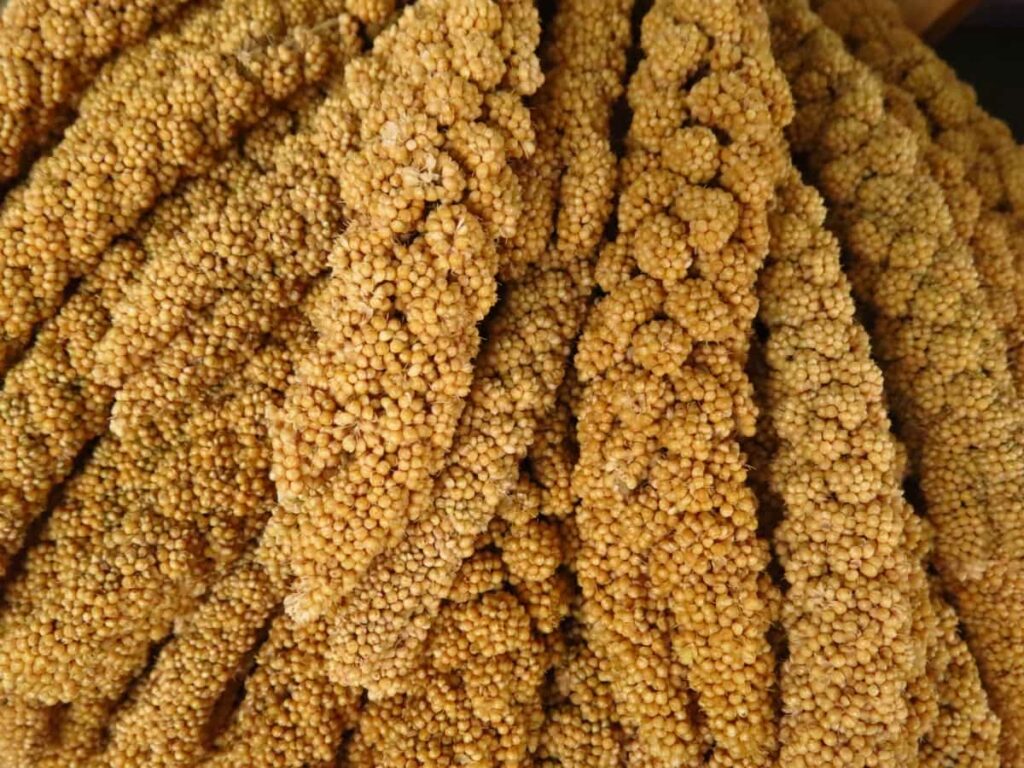
We will provide easy-to-implement strategies backed by accurate data to maximize your millet production. So, let’s get started and explore the secrets to optimizing your millet farm’s performance and also month-wise millets farming operations below
What is Millets Farming?
Millets farming refers to cultivating various small-seeded grains belonging to the family Poaceae. Millets are known for their resilience and adaptability to diverse agro-climatic conditions. These crops, including finger millet, pearl millet, and foxtail millet, have been cultivated for thousands of years and serve as staple food sources in many regions.
Millets are highly nutritious, rich in fiber, protein, vitamins, and minerals. They are also gluten-free, making them suitable for individuals with dietary restrictions. Moreover, millets require minimal water and have a short growing cycle, making them environmentally sustainable crops.
Types of Millets in India
- Pearl Millet (Pennisetum glaucum): Also known as Bajra, Pearl Millet is a high-yielding millet with excellent drought resistance. It is rich in calcium, iron and fiber, making it beneficial for maintaining healthy bones and digestion.
- Finger Millet (Eleusine coracana): Known as Ragi, Finger Millet is a nutritious millet packed with essential amino acids, calcium, and iron. It is often recommended for infants and individuals with iron-deficiency anemia due to its high iron content.
- Foxtail Millet (Setaria italica): Foxtail Millet, or Kangni or Kakun, is a versatile millet variety that is gluten-free and low in glycemic index. It contains significant amounts of dietary fiber and minerals, making it suitable for weight management and diabetes control.
- Little Millet (Panicum sumatrense): With a mild nutty flavor, Little Millet, or Kutki, is rich in fiber and antioxidants. It aids digestion, supports cardiovascular health and is a good energy source.
- Proso Millet (Panicum miliaceum): Proso Millet, called Barri, is a drought-tolerant millet variety. It is easily digestible, gluten-free, and contains high protein, B vitamin, and minerals like phosphorus and potassium.
- Kodo Millet (Paspalumscrobiculatum): Kodo Millet, or Kodra, is known for its high fiber content, which aids in digestion and weight management. It is also rich in antioxidants and minerals such as calcium and iron.
- Barnyard Millet (Echinochloa frumentacea): Barnyard Millet, or Sanwa, is a fast-growing gluten-free and easily digestible millet. It is rich in fiber, phosphorus, and iron, making it a healthy choice for individuals with gluten sensitivity or anemia.
In case you missed it: Fish Farm Operations Management: Month-wise Maintenance for Better Profits
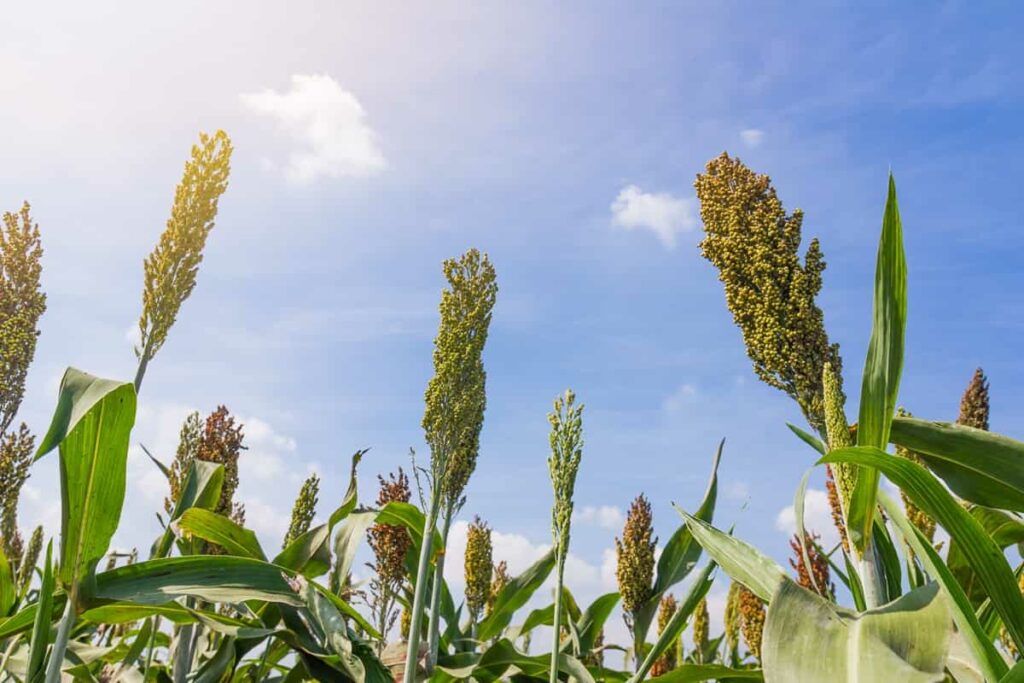
What are Millets Farming Operations?
Millet’s farming operations encompass a range of activities involved in cultivating millet crops. These operations include land preparation, sowing seeds, irrigation management, pest and weed control, crop nutrition, harvesting, and post-harvest processing. Land preparation involves plowing, leveling, and removing weeds to create a favorable environment for millet growth. Sowing seeds at the right time and depth ensures proper germination.
Effective irrigation management ensures that millets receive adequate water without waterlogging. Controlling pests and weeds safeguards the crop’s health. Providing appropriate crop nutrition through fertilization promotes healthy growth. Harvesting millets at the right maturity stage and proper post-harvest processing techniques help maintain the crop’s quality and value.
Millets Farming Management
Preparation of Land
- Millet can be grown in various soils except for waterlogged conditions.
- Plough the field once or twice, then harrowing to create a fine tilth.
Selection of High-Yielding Hybrids and Varieties
Hybrids are preferred in most millet areas, while varieties are suitable for drought-prone regions.
Method of Sowing
- Three sowing systems are followed: flat surface, ridge and furrow, and broad bed and furrow.
- Sow the seed at a depth of 2.5 cm – 3 cm.
Time of Sowing
- Kharif millet should be sown in the first fortnight of July in North and Central India.
- Rabi season in Tamil Nadu requires sowing in the first fortnight of October.
- Gap filling should be done by transplanting seedlings if there is a scanty population.
- Dry sowing is recommended in the Marathwada area of Maharashtra before the first monsoon rains.
- Summer millet should be sown from the last week of January to the first week of February.
Seed Treatment
- Treat seeds with biopesticides or thiram to combat soil-borne diseases.
- Use sulfur powder to control smut disease.
- Soak ergot-affected seeds in a salt solution.
- Apply metalaxyl to control downy mildew.
- Treat seeds with Azospirillum and Phosphobacterium to enhance nutrient availability.
Seed Rate, Spacing, and Plant Population
- Recommended seed rate is 3 kg/ha.
- Plant pearl millet in rows 60 cm apart with a low plant population of 1.0 to 1.25 lakh/ha in arid regions.
- For areas with rainfall over 450 mm, plants at 45 × 10-15 cm spacing with a population of 1.75 to 2.0 lakhs/ha.
- Adjust seed rate and population based on soil type and management practices.
In case you missed it: Month-Wise Vegetable Farming Operations: Management and Maintenance for Better Yields and Profits
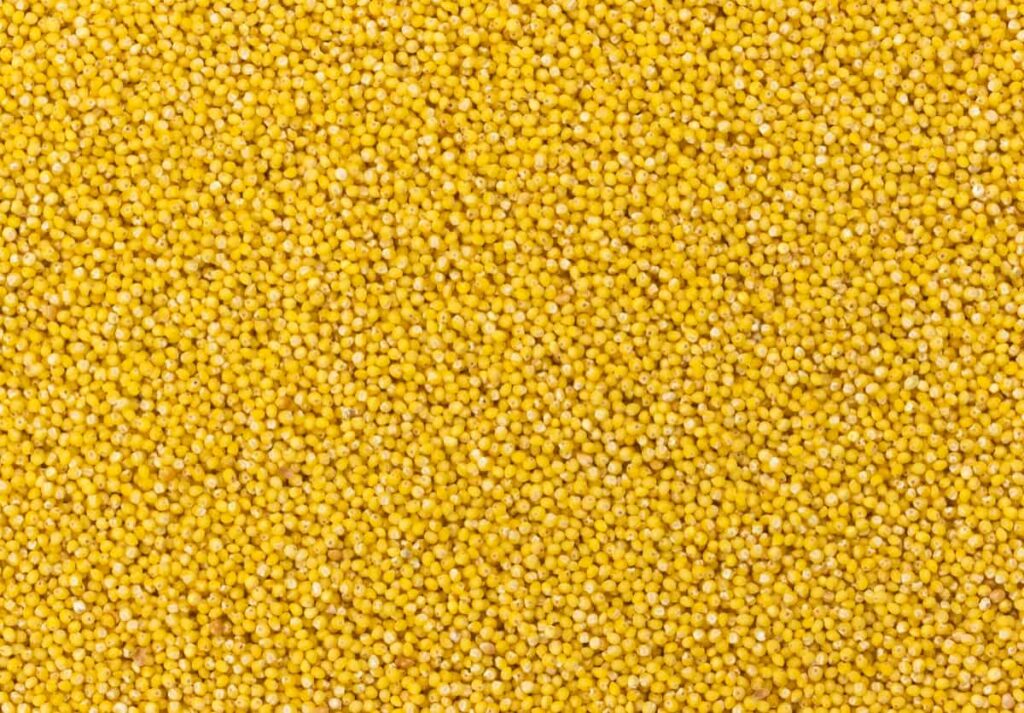
Nutrient Management
- Apply 40 kg N + 20 kg P2O5 per ha in arid regions and 60 kg N + 30 kg P2O5 per ha in semi-arid regions.
- Split nitrogen application in light soils to avoid leaching.
- Use biofertilizers to enhance nutrient availability.
- Apply zinc sulfate in zinc-deficient soils.
- Adjust nitrogen application based on weather conditions.
Inter Cultivation and Weed Control
- Two hoeings and weddings at 15 and 30 days after sowing (DAS) effectively control weeds.
- Use herbicides and hand weeding when necessary.
Irrigation
- Provide irrigation during critical crop growth stages, especially tillering, flowering, and grain development.
- Irrigate summer pearl millet regularly as per crop requirements.
Major Insect Pests and Control
- White grub: Inter-crop with sunflower and pigeon peas, collect and destroy adult beetles, and use insecticides.
- Shoot fly: Sow early or adopt staggered sowing, thin affected seedlings, and use insecticides if necessary.
- Grasshoppers: Practice weed-free cultivation, expose eggs through deep plowing, and use insecticides if required.
- Termites: Deep plowing, collection of plant residue, and use of Chlorpyrifos in the soil or on standing crops.
- Grey weevil: Dusting or spraying insecticides as recommended.
- Earhead bug: Early planting and application of Carbaryl.
Major Diseases and Management
- Downy mildew: Use resistant varieties, treat seeds with metalaxyl, and apply fungicides if necessary.
- Smut: Treat seeds with sulfur powder and adopt crop rotation.
- Ergot: Avoid sowing ergot-affected seeds; use clean seeds, and destroy infected plants.
- Rust: Use resistant varieties, practice crop rotation, and apply fungicides if required.
- Charcoal rot: Practice crop rotation, use well-drained soils, and avoid waterlogging.
- Leaf blight: Use resistant varieties, adopt appropriate spacing, and apply fungicides if necessary.
- Stem rot: Practice crop rotation, avoid waterlogging, and use tolerant varieties.
Harvesting and Threshing
- Harvest the crop when the moisture content of grains reaches 18-20%.
- Cut the plants close to the ground and stack them for drying.
- Thresh the dried plants using a thresher or by beating them with sticks.
In case you missed it: Month-Wise Organic Farm Operation Management: Maintenance for Better Yields and Profit
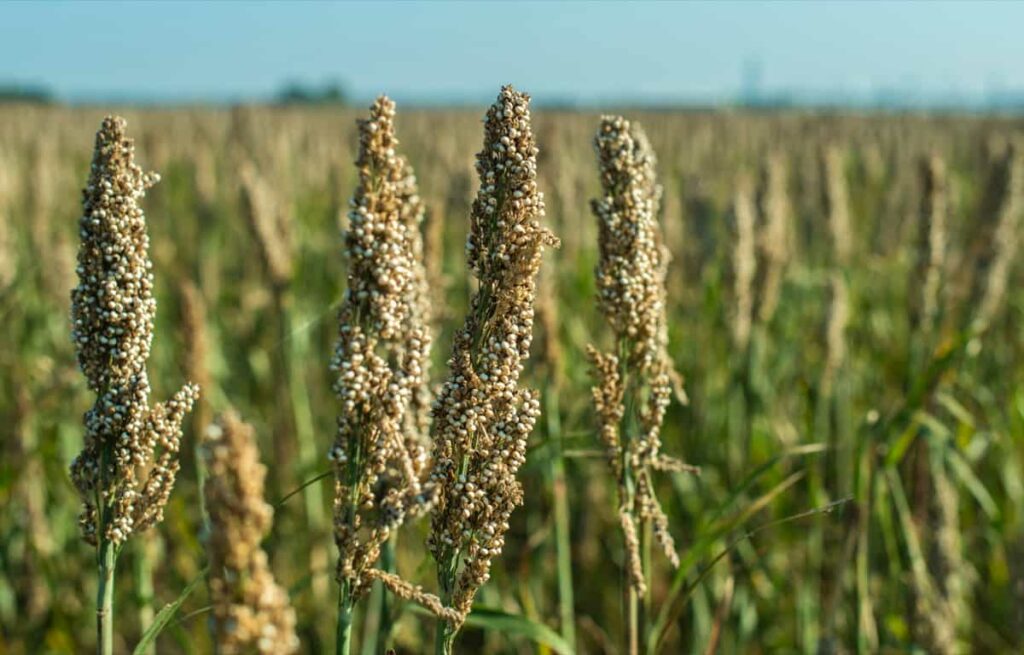
Grain Storage
- Dry the grains to a 10-12% moisture content before storage.
- Store the grains in clean, airtight containers or bags.
- Protect the stored grains from pests and rodents.
Post-Harvest Management
- Remove crop residues from the field to avoid disease and pest carryover.
- Incorporate the residues into the soil or use them for fodder or compost.
- Maintain proper sanitation in the storage area to prevent fungal or insect infestations.
Importance of Effective Operations Management for Maximizing Yield and Profits
- Increased Yield: Efficient operations management practices can significantly enhance crop yield by optimizing resources, improving cultivation techniques, and implementing precision farming.
- Cost Reduction: Effective operations management helps minimize expenses by streamlining processes, reducing wastage, and optimizing inputs such as seeds, fertilizers, and water.
- Timely Operations: Proper planning and execution of operations ensure timely sowing, irrigation, fertilization, pest control, and harvesting, which are crucial for maximizing yield potential.
- Quality Control: Operations management is vital in maintaining product quality by ensuring adherence to standards, implementing quality control measures, and minimizing post-harvest losses.
- Risk Management: Effective operations management includes strategies for mitigating risks associated with weather fluctuations, pests, diseases, and market uncertainties, thereby safeguarding profits.
- Resource Optimization: Efficient utilization of resources like land, labor, machinery, and capital is essential for maximizing productivity and profitability.
- Data-Driven Decision-Making: Operations management relies on accurate data collection, analysis, and interpretation, enabling informed decision-making to optimize operations and maximize returns.
- Sustainability: By implementing sustainable practices, operations management contributes to long-term environmental conservation, resource efficiency, and resilience in agriculture.
- Competitive Advantage: Effective operations management provides a competitive edge by improving efficiency, reducing costs, and delivering higher-quality products, ultimately leading to increased market share and profitability.
- Continuous Improvement: Emphasizing operations management allows for continuous evaluation, learning, and adaptation, leading to ongoing improvement in productivity, yield, and profits.
In case you missed it: Sikkim Organic Farming: For Vegetables, Herbs, Fruits, Millets, Crops, Livestock, and Aquaculture
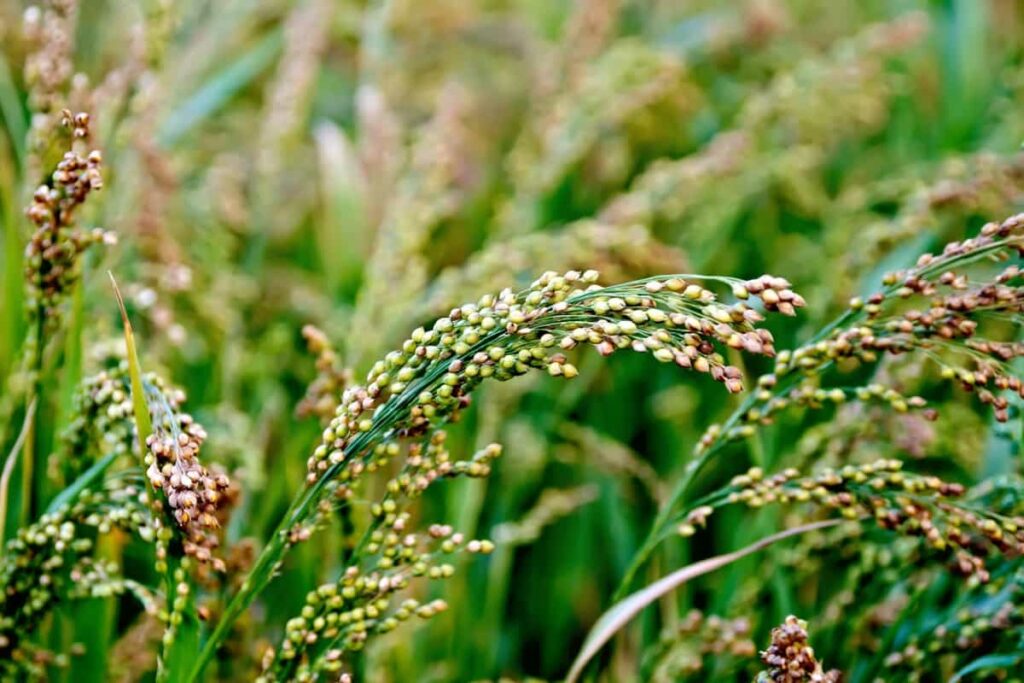
Month-wise Millets Farming Operations and Maintenance Activities in Millets Farming
In millets farming, the month-wise operations and maintenance activities can be summarized as follows, Make a note that, it may vary according to the growing season, variety, region, etc.
| January | field preparation |
| February | Seed selection and treatment |
| March | Land plowing |
| April | Sowing |
| May | Fertilizer application and pest management |
| June | Crop monitoring |
| July | Harvest planning |
| August | Harvesting and post-harvest handling |
| September | Grain storage |
| October | Seed selection and crop rotation planning |
| November | Soil conservation |
| December | Sarm planning and training |
January Operations and Maintenance Activities in Millets Farming
- Evaluate soil fertility through soil testing and amend nutrient deficiencies.
- To create a clean planting bed, prepare the land by removing any debris and weeds.
- Plan and procure quality seeds from reliable sources.
February Operations and Maintenance Activities in Millets Farming
- Continue land preparation, ensuring proper leveling and incorporation of organic matter.
- Install or repair irrigation systems to ensure adequate water supply during the growing season.
- Begin pre-sowing irrigation to prepare the soil for planting.
March Operations and Maintenance Activities in Millets Farming
- Conduct final land preparation, including plowing and harrowing, to create a fine seedbed.
- Test irrigation systems for proper functioning and make any necessary repairs or adjustments.
- Begin seed treatment for disease and pest control.
April Operations and Maintenance Activities in Millets Farming
- Monitor soil moisture levels and irrigation requirements regularly.
- Prepare for weed management by applying pre-emergence herbicides or implementing mechanical weed control methods.
- Monitor for any signs of pests or diseases and take appropriate measures for prevention or control.
May Operations and Maintenance Activities in Millets Farming
- Continue monitoring soil moisture levels and adjust irrigation schedules accordingly.
- Implement integrated pest management strategies to control pests effectively and minimize damage.
- Monitor crop growth and identify nutrient deficiencies, if any, applying appropriate fertilizers as needed.
June Operations and Maintenance Activities in Millets Farming
- Begin sowing millet seeds early in the month when soil and weather conditions are favorable.
- Ensure proper seed spacing and depth for optimal germination and stand establishment.
- Monitor and manage weed growth during the initial growth stages.
July Operations and Maintenance Activities in Millets Farming
- Continue monitoring and adjusting irrigation schedules based on crop requirements.
- Scout for pests and diseases regularly and apply appropriate control measures.
- Implement cultural practices such as thinning and pruning to promote healthy plant growth.
August Operations and Maintenance Activities in Millets Farming
- Monitor and manage weed growth through mechanical or chemical methods as required.
- Monitor crop health for any signs of diseases or nutrient deficiencies, taking corrective measures promptly.
- Monitor and manage irrigation to ensure proper water supply during critical growth stages.
September Operations and Maintenance Activities in Millets Farming
- Monitor and control pests and diseases through integrated pest management practices.
- Monitor soil moisture levels and irrigation requirements, adjusting as necessary.
- Conduct regular crop inspections to assess growth and make necessary adjustments in management practices.
October Operations and Maintenance Activities in Millets Farming
- Monitor crop maturity and plan for harvest based on the millet variety and desired grain moisture content.
- Harvest millet crops at the appropriate stage to ensure maximum yield and grain quality.
- Implement proper post-harvest handling practices, including drying and cleaning of harvested grains.
In case you missed it: Maximizing Yields and Profit: A Comprehensive Guide to Millets Farming Business Plan
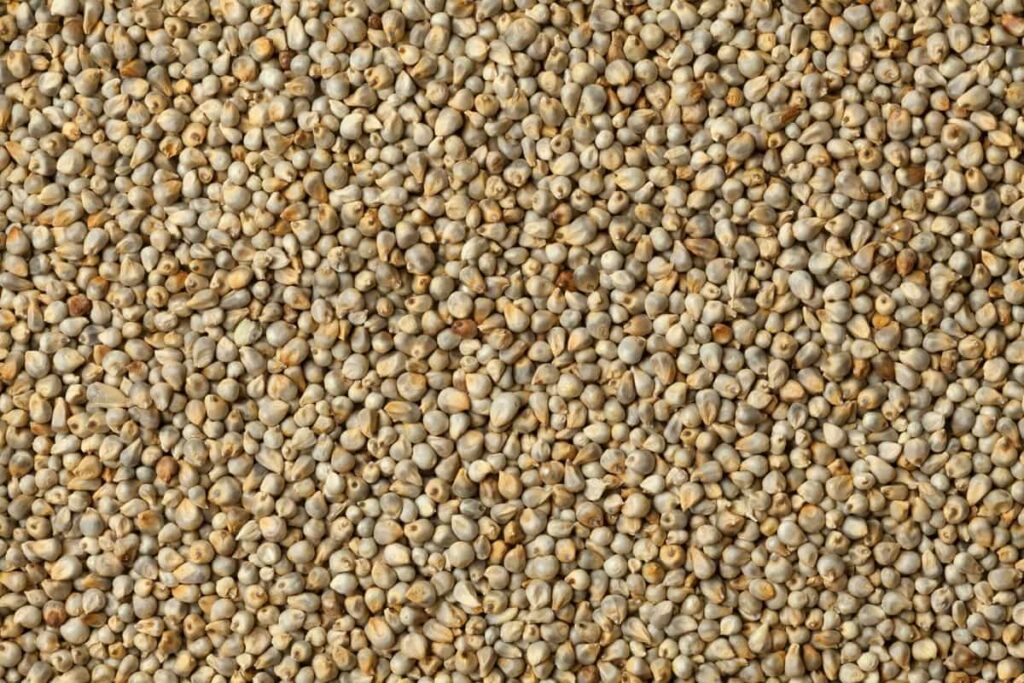
November Operations and Maintenance Activities in Millets Farming
- Store harvested millet grains in suitable storage structures to maintain quality and prevent pest infestation.
- Conduct regular quality checks and monitor for any signs of spoilage or moisture buildup.
- Explore value-addition opportunities such as processing millet grains into various food products.
December Operations and Maintenance Activities in Millets Farming
- Conduct a thorough analysis of the farming season, evaluating successes and areas for improvement.
- Plan for the upcoming season by procuring quality seeds and necessary inputs.
- Prepare the land for the next planting cycle by implementing necessary soil conservation measures.
Conclusion
Effective month-wise maintenance in millet farming operations management is crucial for maximizing yield and profits. By implementing timely activities such as field preparation, seed treatment, crop monitoring, and post-harvest handling, farmers can optimize their millet production and financial returns.
- Crops Grown in Summer Season: Best Choices for Summer Gardening
- Organic Pest Control for Tomato Farming
- How to Maximize Sheep Farming Profit
- Broccoli Varieties: Choosing the Right Cultivars for Your Farm
- How to Raise Pigs in Your Own Backyard: A Comprehensive Guide
- Budget Friendly Sheep Shed Ideas: Cheap and Low-Cost Tips
- How Much Do Cattle Farmers Make: Revenue Streams in Cattle Farming
- Management Pests and Diseases in Your Cotton Field
- Sheep Farming Business Plan for Beginners
- Aquaponic Farming at Home: A Step-By-Step Guide
- Profitable Village Farming Business Ideas in 2024
- High-Yield Aquaculture: Fast-Growing Fish for Farming
- Effective Fish Pond Construction Techniques for Beginners
- Irrigation and Water Management in Pineapple Farming
- Blossom to Harvest: Mastering Flowering and Pollination in Papaya Farming
- Pig Fattening Essentials: From Selection to Sale for Beginners
- Raising Wagyu Cattle: A Complete Guide for Premium Beef Production
- Soil Types and Their Water Holding Capacity
- Optimizing Irrigation Schedules for Coconut Groves for Enhanced Yield
- Espresso Your Garden: Coffee Grounds for Healthier Acid-Loving Plants
- The Best Soil Mix for Snake Plants: How to Mix Your Own Snake Plant Soil
- Green Thumb Success: Expert Tips for Cultivating Greenhouse Beans All Year Round
- Bloom All Year Round: The Ultimate Guide to Indoor Hyacinth Care
- Eco-Friendly Gardening: How to Make Liquid Fertilizer from Kitchen Waste
- Ultimate Guide to Grow Anise in Pots: Explore Seed Propagation to Harvesting
- Guide to Raising Chester White Pigs: Discover Breed Facts to Growth Management
- Mastering the Elegance: The Ultimate Guide to Weeping Cherry Tree Care, Planting, and Maintenance
- Ultimate Guide to Planting Garlic in Grow Bags: Growing Strategies for Beginners
- How to Fix Spider Plant Leaf-Related Problems: Natural and Organic Remedies
- 10 Reasons Why Your Tulsi Plant is Shedding Leaves: Home Remedies and Solutions
- Optimizing Growth and Yield: The Advantages of Palm Bunch Ash Fertilizer
- Utilizing Neem Oil Extract as a Natural Pesticide for Hydrangea
- From Soil to Harvest: Various Ways in Which Farmers Can Use AI Tools
- Steps to Encourage and Induce Citrus Flowers: A Comprehensive Guide
- How to Fix Snake Plant Leaf-Related Issues: Natural and Organic Remedies
- Transform Your Garden into a Fragrant Oasis with Raat Ki Rani (Night Blooming Jasmine)
